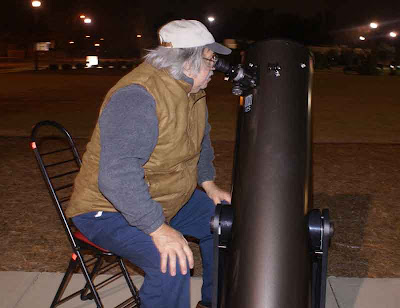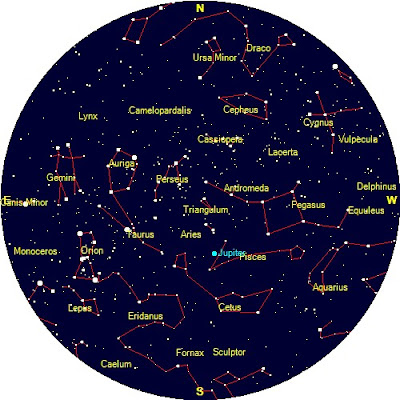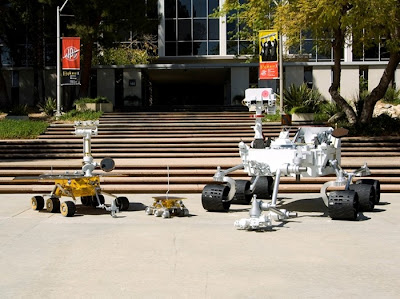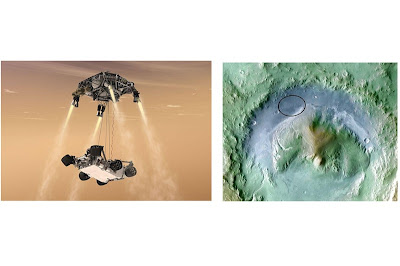
Each month I will describe sights of interest in the night skies of South Carolina. These sights will be broken down into three sections; what you can see with the naked eye, with binoculars, and with a small telescope. The best time to view the night sky is at and around the times when the Moon is not visible, what is known as a New Moon; which will occur this month on December 24th. For December, your best viewing nights will be from December 17th to the 28th. The Star chart below is set for Florence, SC on December 15th at 9 pm.

Star Party:
The November 19th at Lynches River Park turned out to be a great night. On that day a persistent cloud cover continued until just before the 7 pm star party start time. The skies then cleared followed by a short cloud cover again about 9 pm and then clearing again. The absence of clouds does not always imply great viewing conditions because other factors can cause viewing problems. These factors may include atmospheric moisture and thermal layering distortion. However, the clear skies at the Lynches River Star Party resulted in excellent viewing conditions. The favorite target for the night was the planet Jupiter, with all four Galilean moons being visible. The planet was sharp and clear with plenty of color. We usually cannot “push” our Dobsonian telescope to 150 power, due to loss of clarity/resolution, but on that night, Jupiter was still a sharp/clear image even at high power. Below is an image that approximates how we saw Jupiter during the star party, however, our view was much sharper than the image below.

We also viewed the Pleiades (M45), the Dumbbell Nebula (M27), the famous Ring Nebula (M57), the Double Cluster, the blue and gold double star Albireo, and the Orion Nebula (M42).
Lunar Eclipse?
This month you may hear a passing comment about a total lunar eclipse visible over the United States on December 10th, but it will most likely not be reported on your local news broadcasts. The Moon will be totally eclipsed at 6 am in California, therefore, 9 am in South Carolina. It is really a Pacific Ocean lunar eclipse, and as such, we won’t even see a partial eclipse.
Meteor Shower:
Readers of this column know that there are usually only three prominent meteor showers each year, the Perseids in August, the Leonids in November, and the Geminids in December. Interestingly enough, they all peak about the 12th through the 14th of their respective months. A good meteor shower should yield at least one meteor per minute, or 60 per hour. Over the last 10-15 years, the Leonids have had some good peaks, resulting in over 100-200 meteors per hour, however, this is not the norm. Usually, meteors are relatively dim and of course fleeting. Therefore, the main requirement for observing a meteor shower is a dark sky location. Now, you can control your viewing location, but you cannot control the Moon’s location or the weather. This was one of the worst years for viewing meteor showers because each of the three meteor showers mentioned above arrived on or near a full Moon. This month the Geminids peak around December 14th with an almost full Moon nearby. If you wish, you might try to go out and check the sky about 10 pm, before the Moon rises at about 10:20 pm. However, the best viewing for any meteor shower is after midnight, as the Earth turns toward the approaching meteors. Therefore, it appears that this will not be a good year for the Geminids. There is good future news though; next year, all three major meteor showers will occur at or near a new Moon.
Mars News:
November 26th marked the liftoff our NASA’s newest Mars Rover, called Curiosity. The Curiosity Rover should reach Mars next August. This rover, shown on the right in the image below is much larger than our previous two rovers.

The Curiosity is 10 feet long and weighs about 2000 pounds. Unlike previous rovers, Curiosity will require a precision landing in the Martian Gale crater. This will require a special landing vehicle to carry the rover to the exact area desired in the crater; see images below.

Curiosity will not search for life, but for chemical compounds that are known to exist in our Earth life forms. In addition, because of its extensive heavy duty equipment, it will greatly expand the knowledge of Martian geology and weather.
What to do this Month:
I mentioned above that the two possible astronomy events this month are really non-events for us. However, for the dedicated amateur astronomer, there is plenty to see this month. See below:
Naked Eye Sights: Venus will surpass Jupiter as the brightest “star like object” this month. However, throughout December, Venus will only be visible for a short time each night. On December 1st, Venus will set at 7 pm, and by December 31st, it will be visible only until 8 pm. Jupiter will therefore be the most obvious bright “star like object” throughout this month.
The beautiful constellation Orion returns for its winter visit this month, and its nearby companion, the star Sirius competes with Jupiter and Venus for the brightest star versus star-like object in the sky.
Binocular Sights (7 to 10 power): Check out the Orion Nebula, the apparent center star in Orion’s sword. At any power binocular, you should be able to the see the gaseous cloud surrounding the “star nursery” of the Orion Nebula. If viewing conditions are favorable, you may be able to see that the cloud resembles a diving eagle.

Jupiter and its moons continue to be a good target.
Telescope Sights (60-100mm): After checking out the Orion Nebula with your binoculars, try the same target with your telescope. It usually looks best through a reflecting scope due the better light gathering mirror. Don’t forget to look at Jupiter and its moons.
See you next month!










































